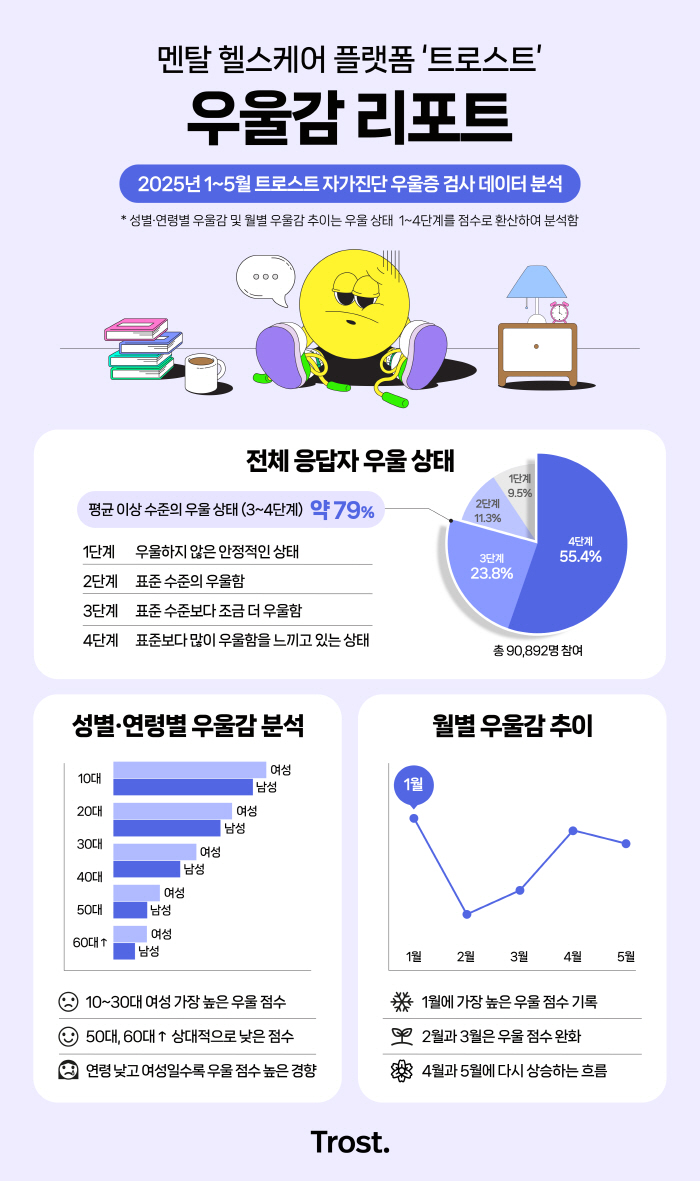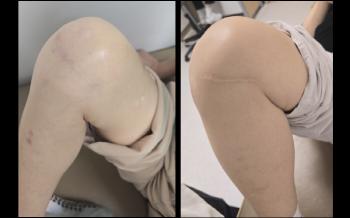Women in their teens and 30s have the highest depression index...January's Highest Figures Record
|
Nudge Healthcare Co., Ltd.'s mental healthcare platform 'Trost' announced 'Depression Report' based on the data of the user's self-diagnosed depression test, which involved 99,892 people from January to May this year.
Trost's depression test classifies the respondents' conditions in stages 1 to 4. Step 1 refers to a state that is not depressed', Step 2 refers to a state that is depressed at the standard level', Step 3 refers to a state that is feeling depressed a little more than the standard level', and Step 4 refers to a state that is feeling depressed a lot more than the standard.
As a result of the analysis, 55.4% of the total respondents were in stage 4 and 23.8% in stage 3, indicating that about 79% showed above-average depression. On the other hand, the first and second stages showed relatively low proportions at 9.5% and 11.3%, respectively.
As a result of gender and age analysis, women in their teens and 30s recorded the highest depression score, while men and women in their 60s and 50s scored relatively low. Overall, it was confirmed that the younger the age, the higher the depression score was.
In particular, the extreme of emotions was the highest among teenagers under the age of 10. The percentage of responses such as 'I'm too sad to endure', 'The future is hopeless', and 'I want to die' was over 30%, which was very serious. In the case of people in their 20s, multiple risk groups were identified, including emotional hypersensitivity, appearance anxiety, and decreased sleep and appetite. In their 30s and 50s, more than half of them responded with 'weapon'weapon' and 'guidelines' 'not as pleasant as before', 'It's hard to start', and 'Most of them are tired'.
On a monthly basis, the depression score was highest in January, and it eased somewhat in February and March and then rose again in April and May. This trend suggests that tension or seasonal depression at the beginning of the year may have had some influence.
A Trost official said, "This analysis confirms the flow that users are aware of changes in their emotions in their daily lives and actively want to check their psychological conditions through digital platforms. We will continue to provide self-diagnosis and psychological counseling solutions that anyone can access easily and conveniently to create an environment where they can manage their minds on a daily basis." he said.
This article was translated by Naver AI translator.




